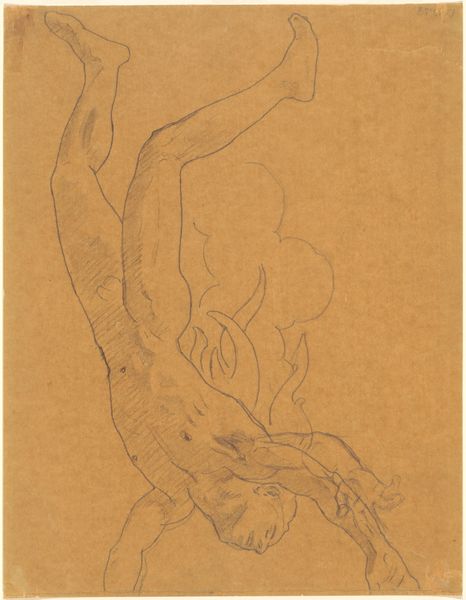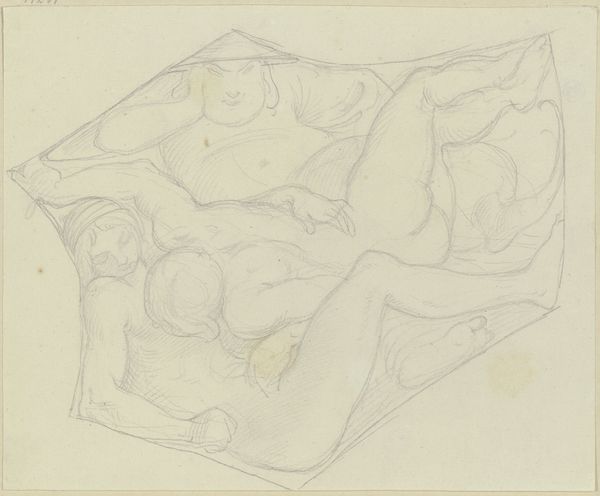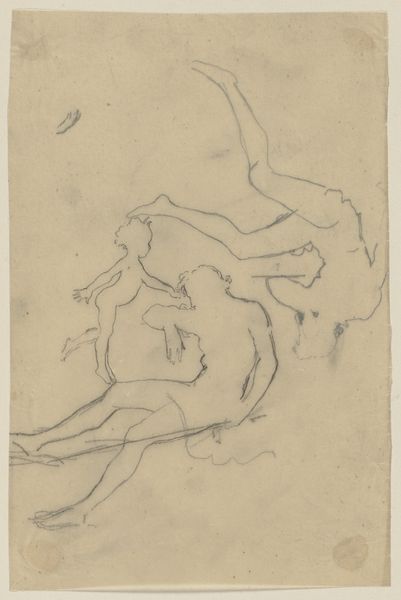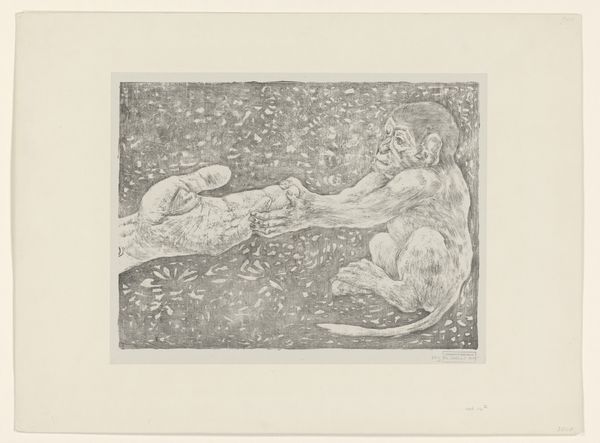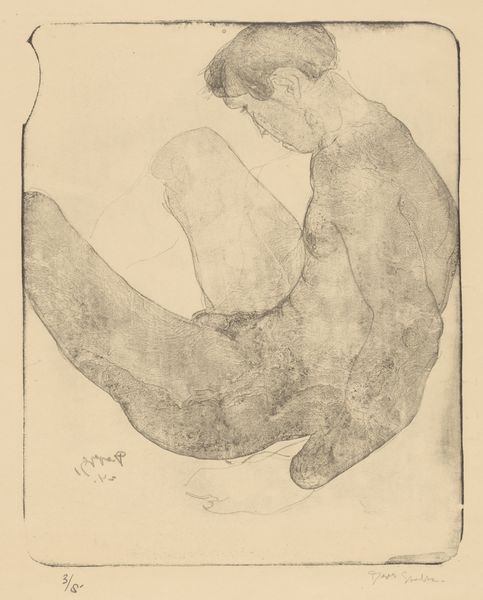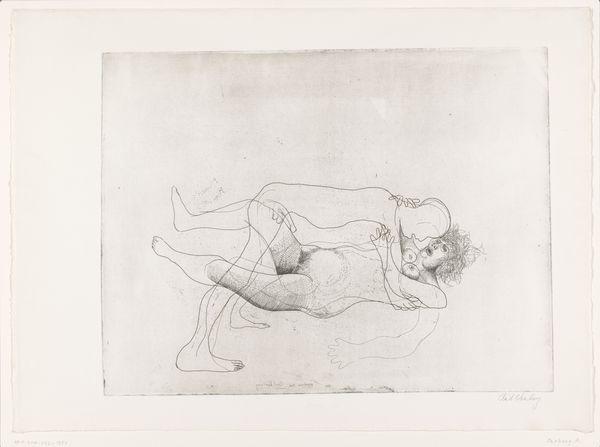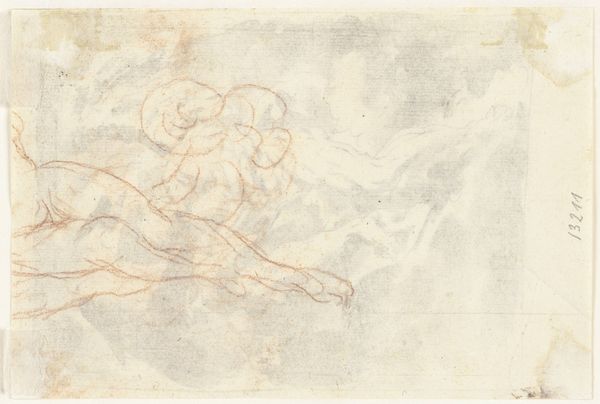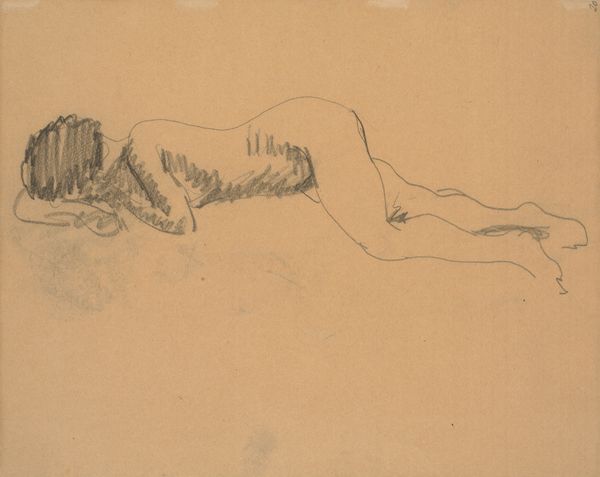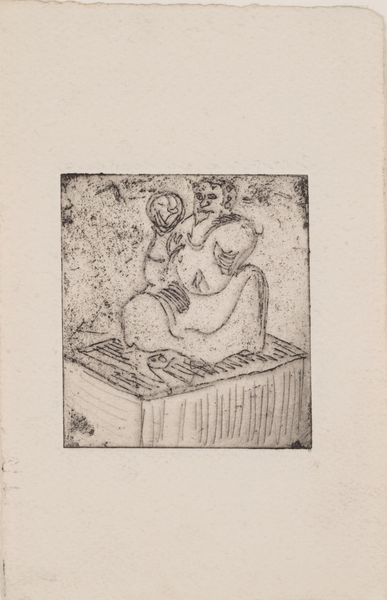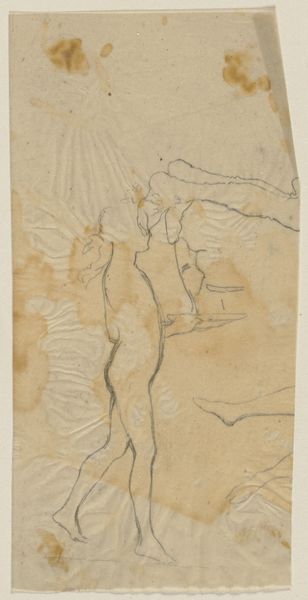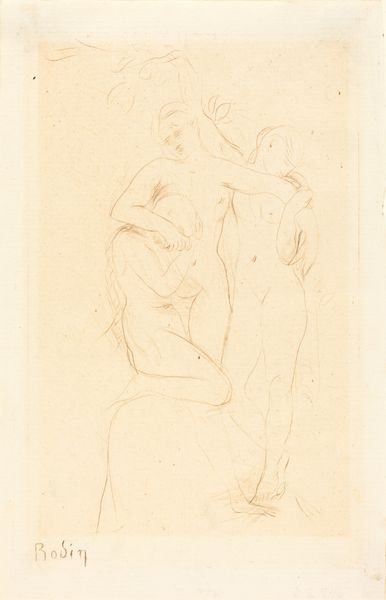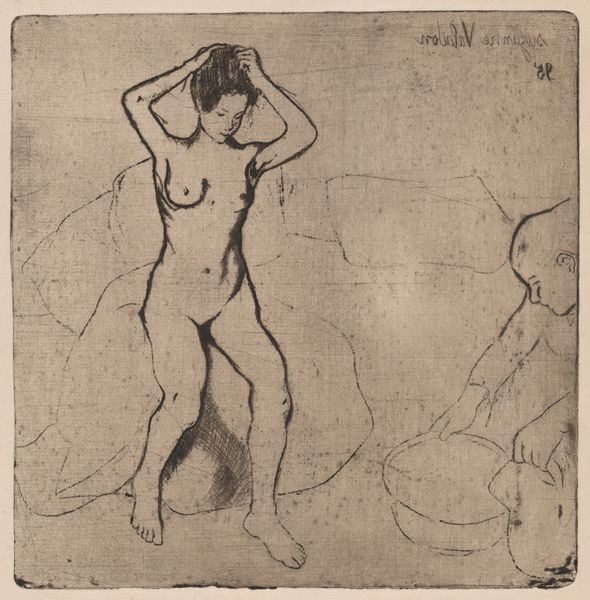
drawing, pencil
#
drawing
#
16_19th-century
#
landscape
#
figuration
#
romanticism
#
pencil
#
nude
Copyright: Public Domain
Curator: Here we have a pencil drawing titled "Mercure (tile draft)," by Hans Thoma. Although undated, it comes to us from the 19th century. Editor: The first thing I notice is the contrast between the somewhat roughly sketched figure of Mercure and the serene landscape in the background. There is an incompleteness to it. I find myself asking what world the nude subject occupies. Is it meant to feel disconnected or are they intended to be an element of the broader setting? Curator: This drawing offers a fascinating glimpse into the process of creating decorative arts during the Romantic period. Thoma envisioned it for a tile, meaning that this sketch represents just one stage toward a mass-produced design intended for domestic consumption. Editor: It's striking how this shifts my perception. Viewing this as the seed of a household object makes it appear differently. It highlights questions of value and the politics of production and labour within artistic mediums. Curator: Indeed. The mythological figure of Mercury, known for his speed and commerce, juxtaposed with the pastoral setting also reveals tensions prevalent in 19th-century society such as those that arise as urban settings increase while the population feels an increasing affinity to the land and simple country life. How were industry and nature relating? What sort of aesthetic value can be extracted from both? Editor: Looking closer, I see these romanticized and soft figures of a merchantile divinity could, during the relevant timeframe, serve the purpose of whitewashing more severe exploitation. And I have to wonder, what kind of audience was expected to purchase such tiles? What kind of fantasy do these people inhabit while Thoma’s workers inhabit far more stark environments? Curator: I appreciate that question. It pulls into focus those who controlled markets in decorative imagery such as tiles at this moment in history, and whose visions drove artistic projects. Thank you for expanding how I will understand this draft moving forward. Editor: And thank you for revealing its function, prompting a deeper understanding of where we might find such powerful statements—disguised as decoration.
Comments
No comments
Be the first to comment and join the conversation on the ultimate creative platform.

